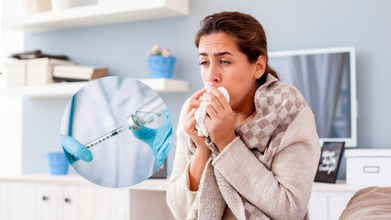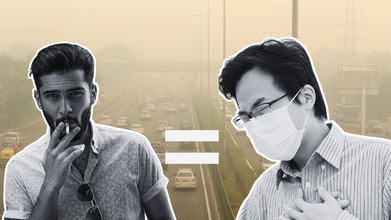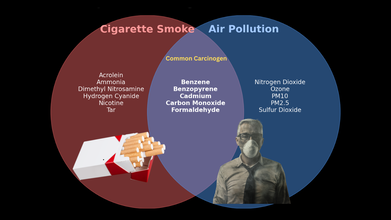- Health Conditions A-Z
- Health & Wellness
- Nutrition
- Fitness
- Health News
- Ayurveda
- Videos
- Medicine A-Z
- Parenting
Think Your Hormones Are Out Of Balance? Doctors Reveal The Warning Signs You Shouldn’t Ignore

Credits: Canva
People assigned female at birth live with hormone shifts throughout their lives. These chemical messengers guide nearly every system in the body. The swings linked to periods, pregnancy or menopause are easy to recognise, but many other factors can unsettle hormone levels.
The body produces more than fifty hormones through the endocrine system, and changes in any of them can signal a deeper health concern. Low insulin may point toward diabetes. Excess cortisol can influence weight gain. Other hormones, like melatonin, rise and fall through the day as part of normal rhythm. And the gradual drop in estrogen and progesterone as women approach menopause is also expected.
What Causes Hormonal Imbalance?
Puberty, pregnancy and menopause naturally reshape hormone activity. Beyond these, several conditions can disrupt normal patterns. Problems with the adrenal gland, thyroid disorders, eating disorders, congenital adrenal hyperplasia, Cushing’s syndrome, diabetes or PCOS can all change your hormone levels. Changes may also stem from stress, certain medicines, tumours, cysts or environmental chemicals.
Interest in hormones has grown recently. Earlier this month, the Food and Drug Administration agreed to remove the boxed warning on menopause hormone therapy after reviewing the evidence. The decision prompted fresh discussion among women considering treatment. Clinicians say many patients are reaching out with new questions, especially in an era filled with quick tests and supplements marketed as hormone balancers. It can be difficult to tell when testing is truly needed.
Warning Signs Of Hormonal Imbalance
As each hormone plays a different role, symptoms vary widely. These are some of the more frequent changes seen in people, as per UCLA Health.
1. Menstrual changes: Shifts in estrogen and related hormones can alter the monthly cycle. Periods may become heavier, lighter, irregular or go missing. Stress, diet and exercise can contribute as well, but hormonal swings remain a leading cause.
2. Hair changes: Hair often reacts quickly to hormonal shifts. Pregnancy can bring thicker strands, while imbalances may trigger hair thinning or hair growth in unexpected places. Excessive facial hair may suggest elevated androgens. Hair loss can point toward a thyroid concern.
3. Skin Changes: Hormonal shifts can influence skin colour, texture and oil production. Acne may flare during pregnancy due to rising progesterone. Darkened patches of skin may appear on areas like the neck, groin or beneath the breasts when estrogen or progesterone levels change.
4. Sexual and vaginal symptoms: Lower estrogen levels, especially with age, can reduce libido and cause vaginal dryness or pain during intercourse. Some women may experience vaginal atrophy when estrogen remains low for long periods.
5. Weight changes: Sudden weight gain or weight loss can reflect a hormonal issue. Many women notice weight gain after menopause. Thyroid disorders, PCOS and Cushing’s syndrome are also linked to changes in body weight.
6. Mood and sleep difficulties: Falling estrogen levels influence serotonin, a chemical important for stable mood. Low serotonin can contribute to anxiety, irritability or low mood. These disruptions often spill into sleep. Some women also report night sweats or trouble staying asleep.
7. Digestive issues: Estrogen and progesterone affect digestion. When these hormones shift, the gut may respond with bloating, constipation or diarrhoea. Some research has linked hormonal changes in people AFAB to irritable bowel syndrome. Many notice digestive changes around their menstrual cycle.
What To Do If You Suspect A Hormonal Imbalance
There is no single test that measures every hormone, and at-home kits only cover a few markers. The safest first step is to speak with your primary care doctor. They can look at your overall health and decide what evaluations are appropriate.
Diagnosis may include:
- A physical exam and review of your medical history
- Checking prescriptions or supplements that may influence hormones
- Blood, urine or saliva tests to measure specific hormone levels
- A pelvic exam to check for cysts or growths
- An ultrasound to look at the ovaries, uterus, thyroid or pituitary gland
Bird Flu In US: How Is The New H5N5 Strain Different From H5N1?

Credits: Canva
As bird flu continues to trouble several countries, health officials in the United States have reported the first known human case of the H5N5 subtype of avian influenza. The Washington State Department of Health announced on November 14, 2025, that the virus was found in a resident of Grays Harbor County.
The patient, an older adult with existing medical issues, is currently in the hospital. Authorities noted that the individual kept poultry at home that had contact with wild birds, which is believed to be the likely source of the infection, though the investigation is still underway. Since H5N5 is newly identified in humans, many are asking whether it differs from the earlier H5N1 strain.
What Is the H5N1 Strain?
H5N1 is a highly pathogenic form of avian influenza that mainly affects birds but can also infect mammals, including humans. It can lead to severe illness in people and has a high fatality rate, though it rarely spreads from one person to another, as per the World Health Organization. The virus has moved across continents in wild and farmed birds and has recently been found in dairy cattle and several other mammals.
What Is The New H5N5 Strain?
The “new” H5N1 strain refers to the 2.3.4.4b clade of highly pathogenic avian influenza (HPAI), which has caused a widespread animal outbreak since appearing in 2020. This version is a newer genetic branch of H5N1 and has swept through wild birds, poultry farms and an increasing range of mammals, including dairy herds in the United States. At present, the patient infected in the U.S. has been diagnosed with the newer H5N5 subtype.
How Is H5N5 Different From H5N1?
According to the CDC, both H5N5 and H5N1 fall under the avian influenza family, with the main distinction being the type of neuraminidase (N) protein on the virus surface. H5N5 contains the N5 protein, while H5N1 carries the N1 protein. Although this genetic change can influence viral features, their overall pattern of illness and symptoms is expected to be much the same, particularly in birds and livestock.
The genetic structure is the only difference, with H5N1 strain containing a subtype of influenza A with a segmented genome while the other has a new reassortant virus formed from several subtypes, possibly including H5N1, as per National Institute of Health.
Is A Vaccine Available For The H5N1 Bird Flu Strain?
Vaccines for bird flu do exist, but they are not intended for general public use and are not easily available for everyday protection. Some vaccines have been created and stored for possible deployment in people at higher risk, such as poultry workers and farm staff, and they are also used in animals like chickens to help manage outbreaks. The United States and several other countries have stockpiled H5N1-specific vaccines that could be rolled out if the threat to humans grows. A few nations, including Finland, are already offering them to certain high-risk groups. At the moment, there is no advice for the wider public to take a bird flu vaccine, as there is no sustained human-to-human spread and no mass-market human vaccine in use.
The New Flu Strain Emerged Too Late For Vaccines, And It Is Already Causing Outbreaks

Credits: Canva
Flu season is here again and global health experts are getting worried about a strain that came up in June. The worry's cause is that the strain came up four months after the makeup of this year's flu shot.
This is the strain H3N2. The strain has caused outbreaks in Canada and in the UK, and health officials have warned about the early wave that is sending people to the hospitals.
As per Dr Wenqing Zhang, who is the head of the World Health Organization (WHO)'s Global Respiratory Threats Unit, "Since it emerged, it is rapidly spreading and predominating in some countries so far in the Northern Hemisphere."
The New Strain
The version of H3N2, which has been circulated worldwide this year "acquired 7 new mutations over the summer," said Antonia Ho, a consultant in infectious disease at Scotland's University of Glasgow. As per her media statement, this "means the virus is quite different to the H3N2 strain included in this year's vaccine".
The strain is now picking up in Canada, after it has been active in the UK, leading to flu cases being triple to what it was the same time last year. Furthermore, generally, H3N2 is thought to cause more illness, and this could be worse for older adults. In fact, Japan is also experiencing an early and harsh flu season. Japanese news outlet Nippon TV reported that as of November 4, flu cases in Tokyo has surged six times to the level it had seen last year. This data has been confirmed by the Japanese Ministry of Health, Labor, and Welfare. As per the media outlet, more than 2,300 day cares and schools were partially closed.
What Is Happening In The US?
H3N2, which is a strain of influenza have had some cases in the US, where people reported positive for flu. However, the Centers for Disease Control and Prevention (CDC) has not provided any detailed national report on flu since September 26, ever since the government shutdown happened.
What About This Year's Flu Shot? Will It Be Of any Use?
Every February, global health experts and vaccine manufacturers decide which flu strains should be included in the Northern Hemisphere’s fall vaccine, based on the strains circulating in the Southern Hemisphere. This year’s flu shot targets three strains, two influenza A types and one influenza B.
While the annual flu vaccine doesn’t always prevent infection, it significantly reduces the severity of illness. Last year, it was up to 55% effective in preventing hospitalizations among adults with the flu.
On Tuesday, U.K. health authorities reported early data showing that this year’s vaccine is up to 40% effective at preventing hospitalizations in adults.
Despite the variation in effectiveness, experts stress the importance of getting vaccinated. “Decades of data show that even when the match isn’t perfect, the flu shot continues to prevent hospitalizations, ICU admissions, and helps keep people out of the cemetery,” said Dr William Schaffner, an infectious disease expert at Vanderbilt University Medical Center, in Nashville, Tennessee, as reported by NBC.
Breathing Delhi's Toxic Air Is Like Smoking 20 Cigarettes A Day, According To Pulmonologist

Credits: Canva, PTI
As of 7am today, Delhi's average AQI was registered at 446 as per aqi.in. However, the Early Warning System for Delhi, under the Ministry of Earth Sciences, Delhi's average AQI at 7am was registered at 341, slightly better, still close to 400. Dr Shivanshu Raj Goyal, a pulmonologist and Associate Director Pulmonary Medicine at MAX Healthcare in Gurugram and Delhi, in an Instagram video said that breathing this toxic air is equivalent to smoking 20 cigarettes in a day.
No One In Delhi Is A Non Smoker
The doctor starts his video with a rather strong statement, "At present, no one in Delhi-NCR is a non-smoker."
"With the AQI of around 400, if I break down the facts, with every 20 of an AQI of PM2.5, is equivalent to smoking a cigarette. So at the AQI of around 400, you are smoking easily 20 cigarettes a day. That is for everyone, each one of us, even a small change. So imagine the amount of damage that this AQI must be causing to your lungs," he says.
The doctor also states that on an average, a person breathes around 20,000 times in a day, so it means we are inhaling the toxic air at least 20,000 times a day.
As per Action on Smoking and Health (ASH), a cigarette contains nicotine, and tar, which is composed of chemicals like benzene, benzopyrene, and the gas includes carbon monoxide, ammonia, dimethyl nitrosamine, cadmium, formaldehyde, hydrogen cyanide and acrolein. Some of these marked irritant properties are also carcinogen, meaning, it can cause cancer.
Whereas Air Pollution contains pollutants like particulate matter PM 10 and PM 2.5, ozone, nitrogen dioxide, carbon monoxide, cadmium and sulfur dioxide. Air pollution, which is often a byproduct of combustion or released from vehicle exhaust also contain formaldehyde, benzopyrene, and benzene. As per the World Health Organization (WHO), the pollutants contain carcinogens, and the outdoor air pollution is in fact classified as Group 1 carcinogen.
Common Carcinogen In A Cigarette And Air Pollutants

Carbon Monoxide: a poisonous, flammable gas that is colorless, odorless, tasteless, and slightly less dense than air.
Benzene: a colorless and highly flammable liquid with a sweet smell, and is partially responsible for the aroma of gasoline.
Cadmium: a soft, silvery-white metal (atomic number 48) that is toxic and naturally found in the environment, but human activities have increased its levels. It is used in products like batteries, pigments, and coatings, and exposure can occur through tobacco smoke, contaminated food, and occupational inhalation. Cadmium is a known human carcinogen that can damage the kidneys and bones.
Formaldehyde: a colorless, flammable gas with a strong odor, whose exposure could cause cancer.
Benzopyrene: a group of organic compounds known as polycyclic aromatic hydrocarbons. It is a colorless crystalline solid found in sources like cigarette smoke, coal tar and is a known carcinogen that can cause cancer and other health problems like skin rashes and bronchitis, and exposure requires medical attention for any symptoms.
So, What Can Be Done To Protect Yourself Against These Carcinogen?
Dr Shivanshu Raj Goyal points out that these carcinogens could lead to long term lung and heart damage, as well ass cause chronic cough, breathlessness, asthma, and COPD. However, there are ways to protect yourself:
- Avoid outdoor activities during peak pollution hours
- Use N95 masks when stepping out
- Keep air purifiers on indoors
- Stay hydrated and include antioxidant-rich foods
- Visit a pulmonologist if you experience persistent breathing issues
© 2024 Bennett, Coleman & Company Limited

